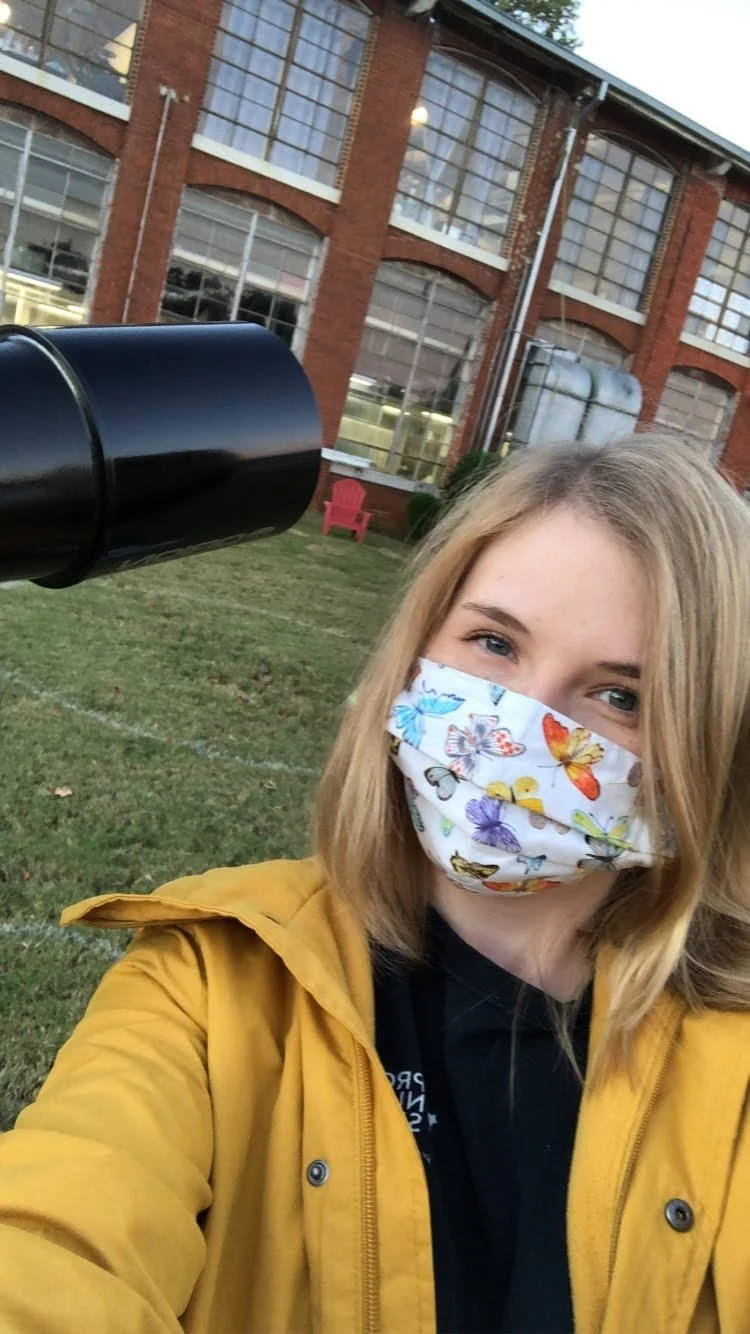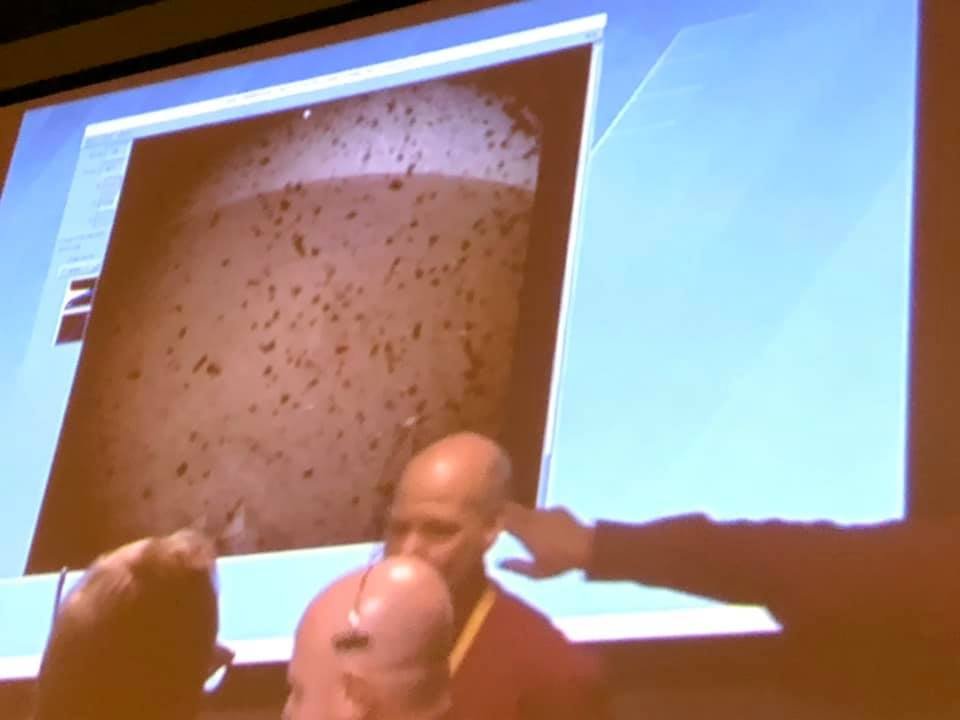One of our younger astronomy participants peering through and adjusting “Sergei,” a veteran astronomy outreach telescope. Sergei is a 4.25” refracting telescope, optimal for a wide variety of deep sky objects, like globular clusters, planets, and even dim planetary nebulae. (August, 2022)
A lineup of impressive, teen-made Dobsonian reflectors, built during our inaugural scope-building camp. These are the prototypes for future, wider-reaching telescope kits, released to the general public. The light-gathering “objective” end of these telescopes are roughly 4” in diameter, allowing an observer a great view of the Moon, naked-eye planets, and brighter array of deep-sky objects. (July, 2020)
Image taken at Petroglyph National Monument, Rinconada Canyon trail, featuring an image of a face (upper right), from around the Ancestral Puebloan period (1300-1600AD). This particular face sits, facing towards the direction of the Sun’s motion (East-West), leading us to speculate whether it is an image of the “sun-face” spirit, so prevalent in southwestern Native American folklore. We were in this area during our inaugural outreach and cultural astronomy research trip. (July, 2022)
Project Night Sky observing Night (October 2020)
We were honored to give a presentation on Project Night Sky’s mission to the members of the Von Braun Astronomical Society! (Fall 2018)
Project Night Sky’s booth at Huntsville STEAM Works’ Pi-Day Celebration. (March 2018)
(Two images) Photographs taken during my senior seminar project about the effects of satellite orbits in scientific observations of the deep sky. Using two semi-random observation fields in the night sky (shown above), I found that at least 10 satellites of varying brightness would cross the telescope’s field of view during a given observing night. The above, grey-scale image is of one such satellite. Events such as these, over a 2-4 hour observing night represents a serious threat to the viability of ground-based observations. (Spring 2022)
Mercury transit! This alignment is somewhat irregular for Mercury, occurring between 3-13 years. As such, the next Mercury transit will be in 2032. Mercury is visible up and to the right of center in this view of the Sun, taken by our veteran scope, Sergei. (November 2019)
The first image received from the InSight lander (now defunct). Our team was there to live-stream the U.S. Space and Rocket Center’s landing event that day. Our coverage was one of the very first released images of InSight’s first light! (November 2018)










